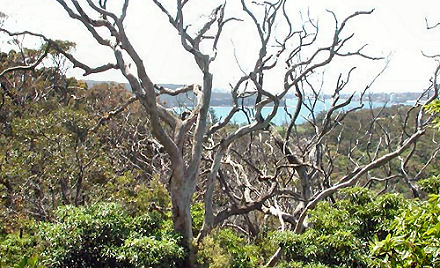
A new analysis of climate change models predicts a 50 percent increase in lightning strikes across the United States during this century as a result of warming temperatures associated with climate change.
University of California, Berkeley, climate scientist David Romps and his colleagues looked at predictions of precipitation and cloud buoyancy in 11 different climate models to estimate a 12 percent rise in cloud-to-ground lightning strikes per degree Celsius temperature increase. That equates to a roughly 50 percent increase by 2100 if Earth sees the expected 4-degree Celsius increase in temperature.
“With warming, thunderstorms become more explosive,” said Romps. “This has to do with water vapor, which is the fuel for explosive deep convection in the atmosphere. Warming causes there to be more water vapor in the atmosphere, and if you have more fuel lying around, when you get ignition, it can go big time.”
While some studies have shown changes in lightning associated with seasonal or year-to-year variations in temperature, there have been no reliable analyses to indicate what the long-term future may hold. Romps hypothesized that two atmospheric properties – precipitation and cloud buoyancy – together might be a predictor of lightning, so he looked at observations during 2011 to see if there was a correlation.
“Lightning is caused by charge separation within clouds, and to maximize charge separation, you have to loft more water vapor and heavy ice particles into the atmosphere,” he explained. “We already know that the faster the updrafts, the more lightning, and the more precipitation, the more lightning.”
Precipitation – the total amount of water hitting the ground in the form of rain, snow, hail or other forms – is basically a measure of how convective the atmosphere is, he said, and convection generates lightning. The ascent speeds of those convective clouds are determined by a factor called CAPE – convective available potential energy.
“CAPE is a measure of how potentially explosive the atmosphere is, that is, how buoyant a parcel of air would be if you got it convecting, if you got it to punch through overlying air into the free troposphere,” Romps said. “We hypothesized that the product of precipitation and CAPE would predict lightning. We were blown away by how incredibly well that worked to predict lightning strikes.”
Exactly why CAPE increases as the climate warms is still an area of active research, Romps said, though it is clear that it has to do with the fundamental physics of water. Warm air typically contains more water vapor than cold air; in fact, the amount of water vapor that air can “hold” increases exponentially with temperature. Since water vapor is the fuel for thunderstorms, lightning rates can depend very sensitively on temperature.
On average, the models predicted an 11 percent increase in CAPE in the U.S. per degree Celsius rise in global average temperature by the end of the 21st century. Because the models predict little average precipitation increase nationwide over this period, the product of CAPE and precipitation gives about a 12 percent rise in cloud-to-ground lightning strikes per degree in the contiguous U.S., or a roughly 50 percent increase by 2100 if Earth sees the expected 4-degree Celsius increase (7 degrees Fahrenheit) in temperature. This assumes carbon dioxide emissions keep rising consistent with “business as usual.”
More lightning strikes mean more human injuries; estimates of people struck each year range from the hundreds to nearly a thousand, with scores of deaths. But another significant impact of increased lightning strikes would be more wildfires, since half of all fires – and often the hardest to fight – are ignited by lightning. More lightning also would likely generate more nitrogen oxides in the atmosphere, which exert a strong control on atmospheric chemistry.
In the future, Romps plans to look at the distribution of lightning-strike increases around the U.S. and also explore what lightning data can tell climatologists about atmospheric convection.
Related:
Discuss this article in our forum
Ball lightning all in the mind, say physicists
Lightning unleashes potent radiation cocktail
Radiation exposure from “dark lightning” quantified
Satellite catches thunderstorm producing antimatter bursts


















Comments are closed.